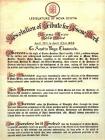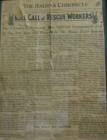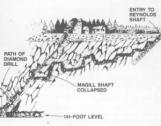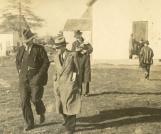4
In hospital both men improved in health although Scadding had to have his toes amputated. Both men received hundreds of cards and thanked their rescuers with kind wishes.Robertson gave the complete story of the 242 long hours to the Red Cross of Canada. They sold the story in four parts. In May, Scadding added a fifth part. By this time Robertson had returned to work in Toronto. Scadding stayed in hospital for six months receiving treatment.
The 300 rescue workers were duly honored including a message from His Majesty, King Edward in England. Prayers were offered in the provincial legislature.
Leader of the Opposition, G. S. Harrington, charged that the mine was operating without a license and the government was charged with taking advantage of the publicitiy; they finally ordered a full inquiry.
An inquest was held in the community about the events that led up to the cave in and the subsequent rescue. The coroner's jury found the Magill had died of pneumonia. Sight seerers clogged the road to the area and barriers had to be erected by the shaft so no one would fall in.
The final report in August reported that the "managers of the mine had been negligent in caring for the condition of their main and only travelling way, both for entering and leaving the mine."
The mine was closed permanently in August of that year.
A stone cairn was erected over the casing of the diamond drill to mark "The place where Dr. David E. Robertson, Herman Russell Magill, Charles Alfred Scadding of Ontario were entombed from Arpil 12th to April 22nd, 1936 by the collapse of the Moose Rvier Gold Mines. Men from other mines in Nova Scotia and Ontario working under hazardous conditions, succeeded by drilling a small tunnel through the broken rock, in bringing Dr. Robetson and C. A. Scadding out alive.
H. R. Magill died on the seventh day.
This cairn also marks the position of the bore hole which reached the underground workings on the sixth day and through which direct telephone communcitions was established and food supplied to the men until the rescue was completed.
Erected by The Department of Mines."
The events of those ten days are still remembered in song, poetry, and prose. The famous song by Wilf Carter is still sung, and books and plays have been written and are still performed.
The cairn is still there, surrounded by a provincial park. Both are located near the small Moose River Museum - dedicated to the history of gold mining and to the trapped men and the bravery of the members of the community and those who joined them in the rescue efforts, and to the journalists who preserved and the amazing feat of the CRBC live broadcast which made live radio accessable to all.
6
A resolution was passed in parliament to honour the rescue workers for their bravery.1936
Moose River, Nova Scotia






